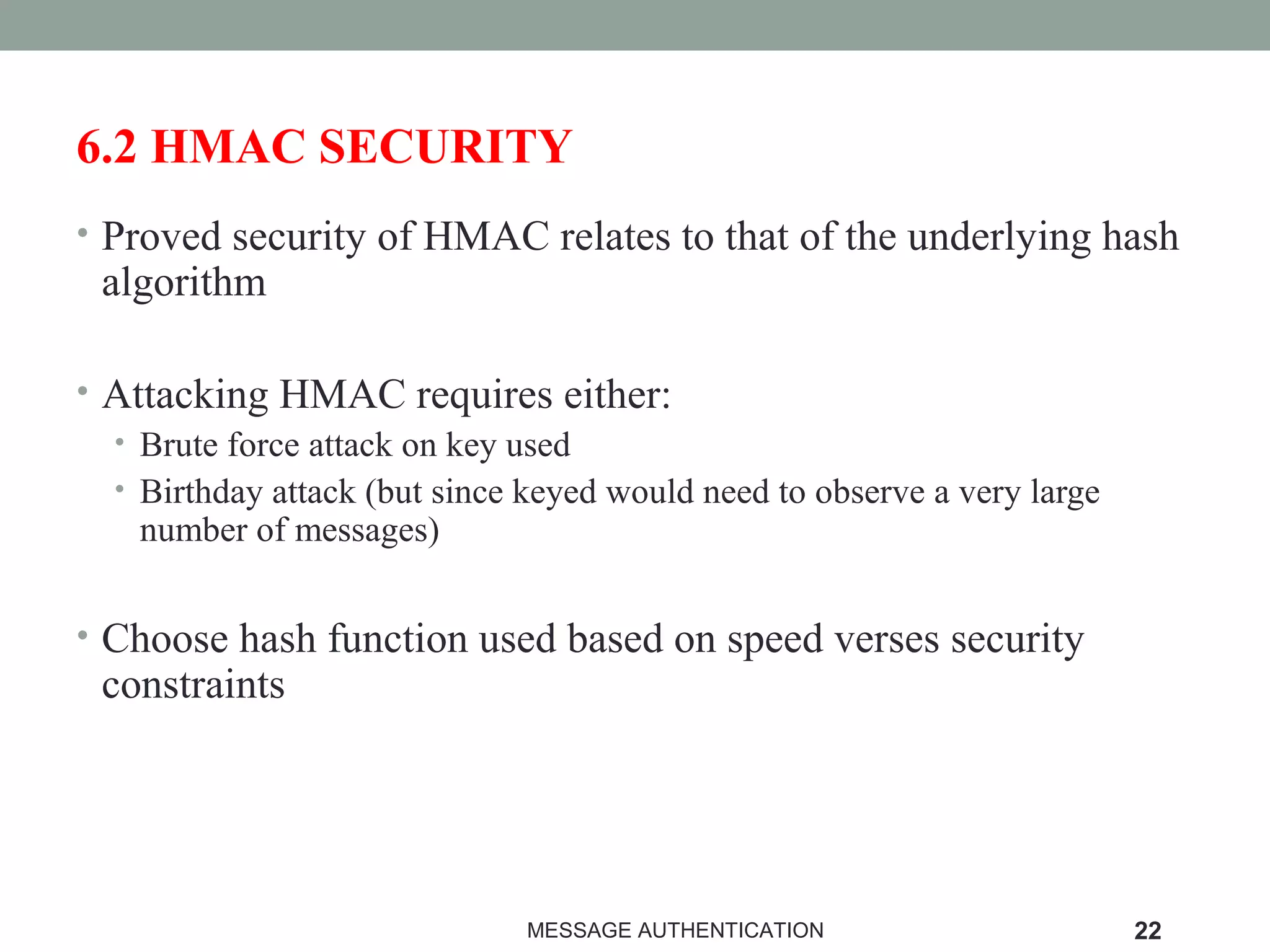The document discusses computer security focusing on message authentication, highlighting the requirements for message integrity and sender validation. It covers methods such as symmetric and public-key encryption, hash functions, message authentication codes (MAC), and HMAC, explaining their roles in ensuring message security against various attacks. The content serves as an outline for effective communication protocol management in IT, emphasizing the importance of confidentiality and authentication mechanisms.

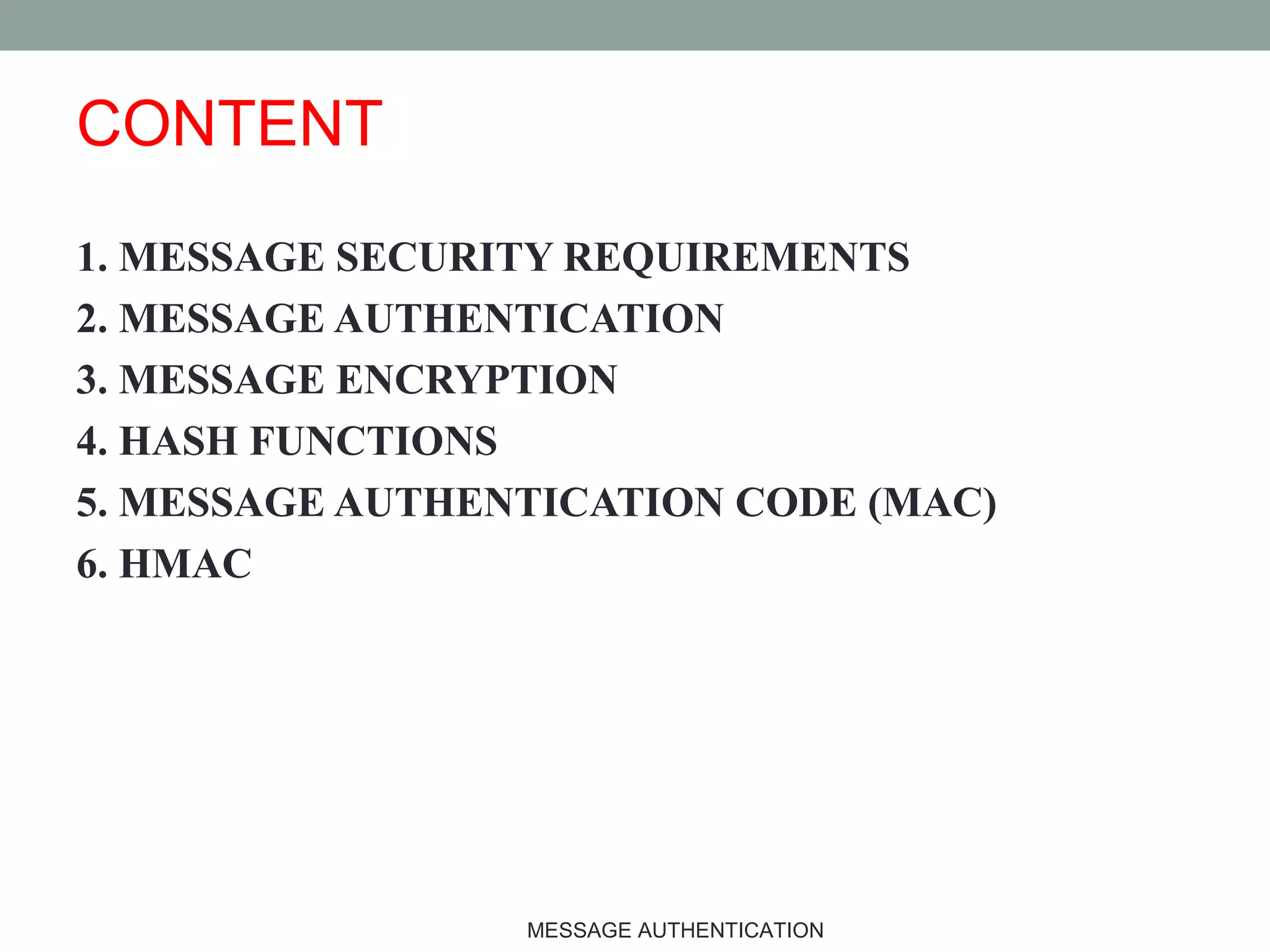
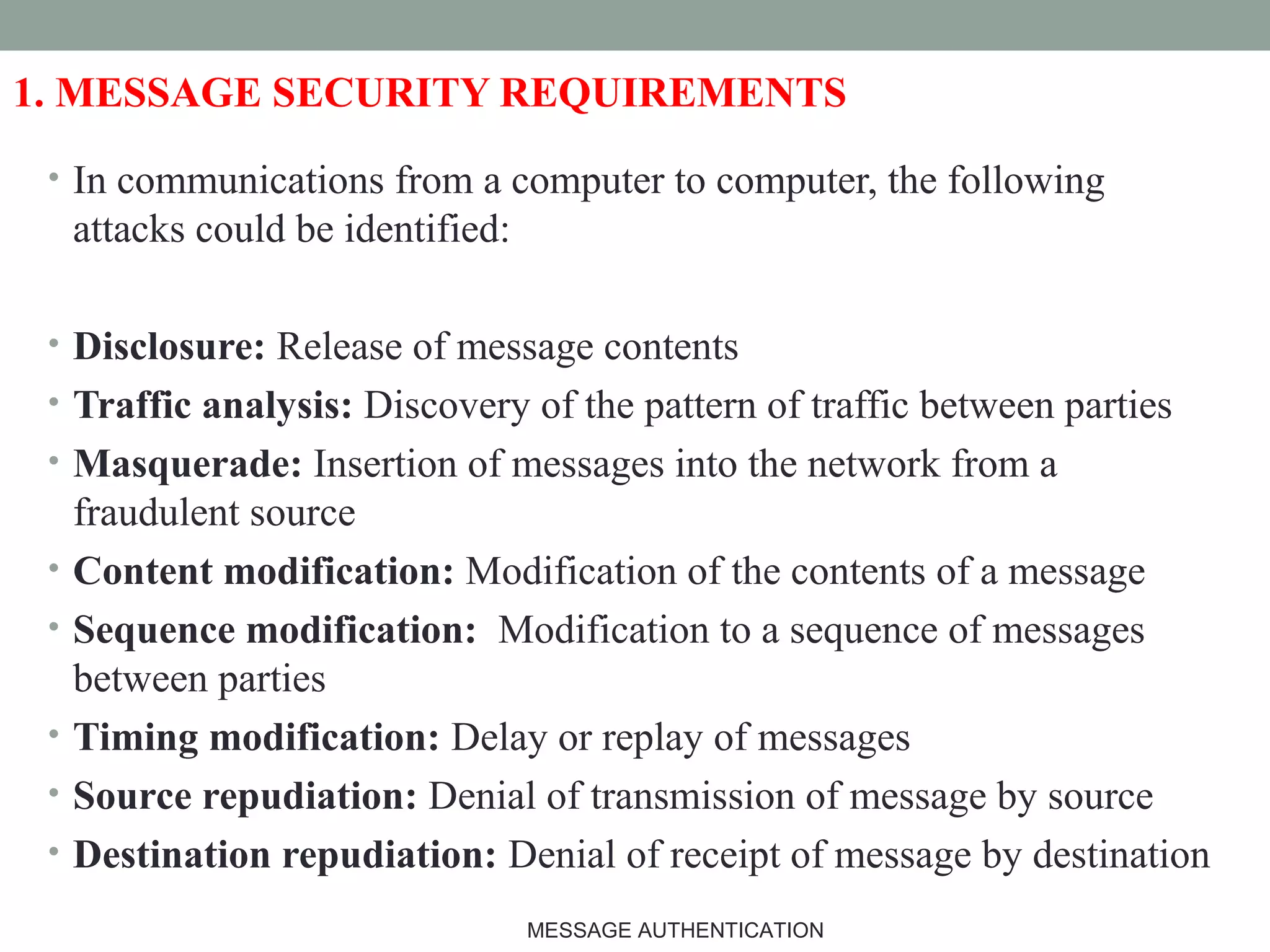
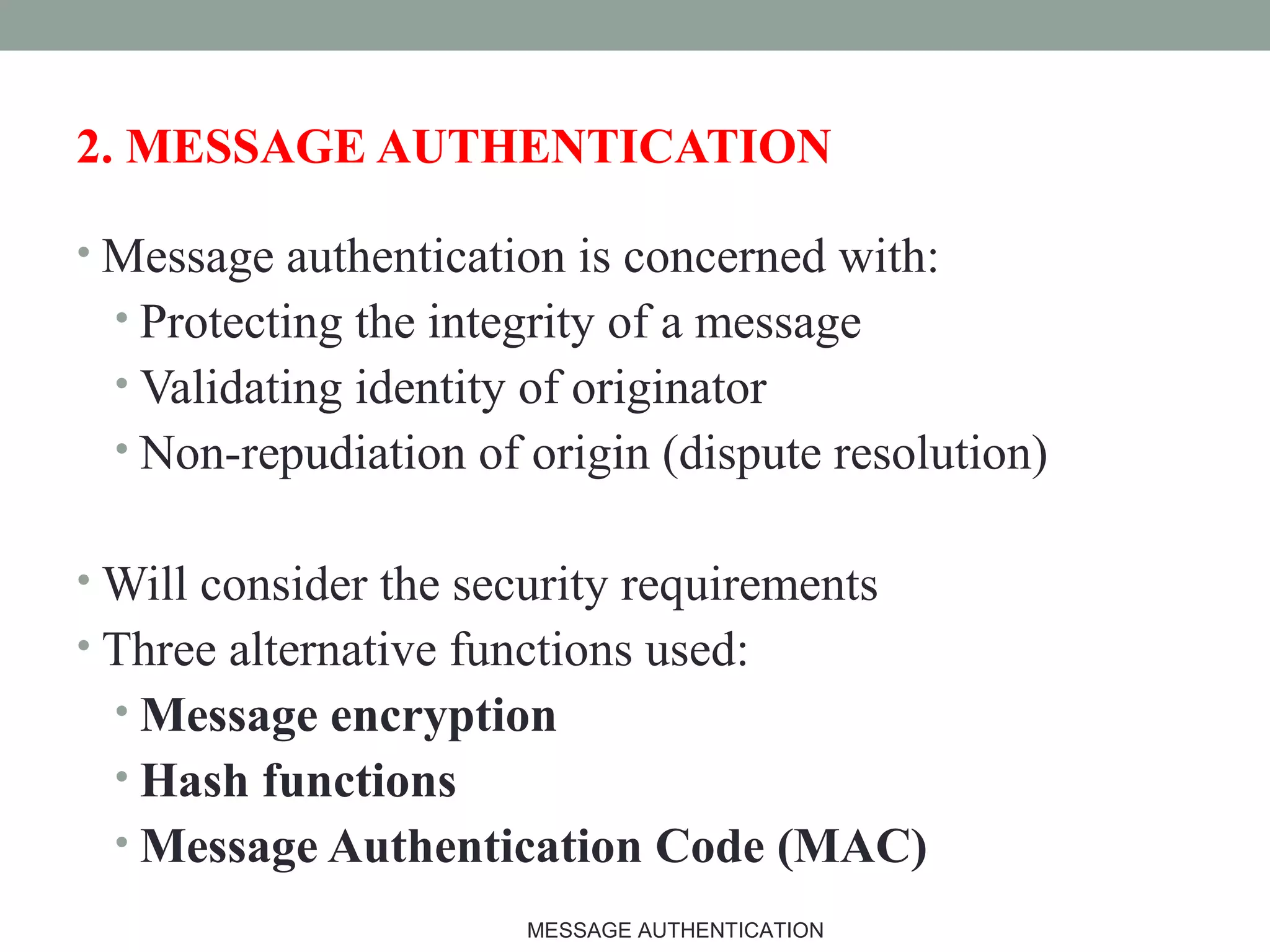
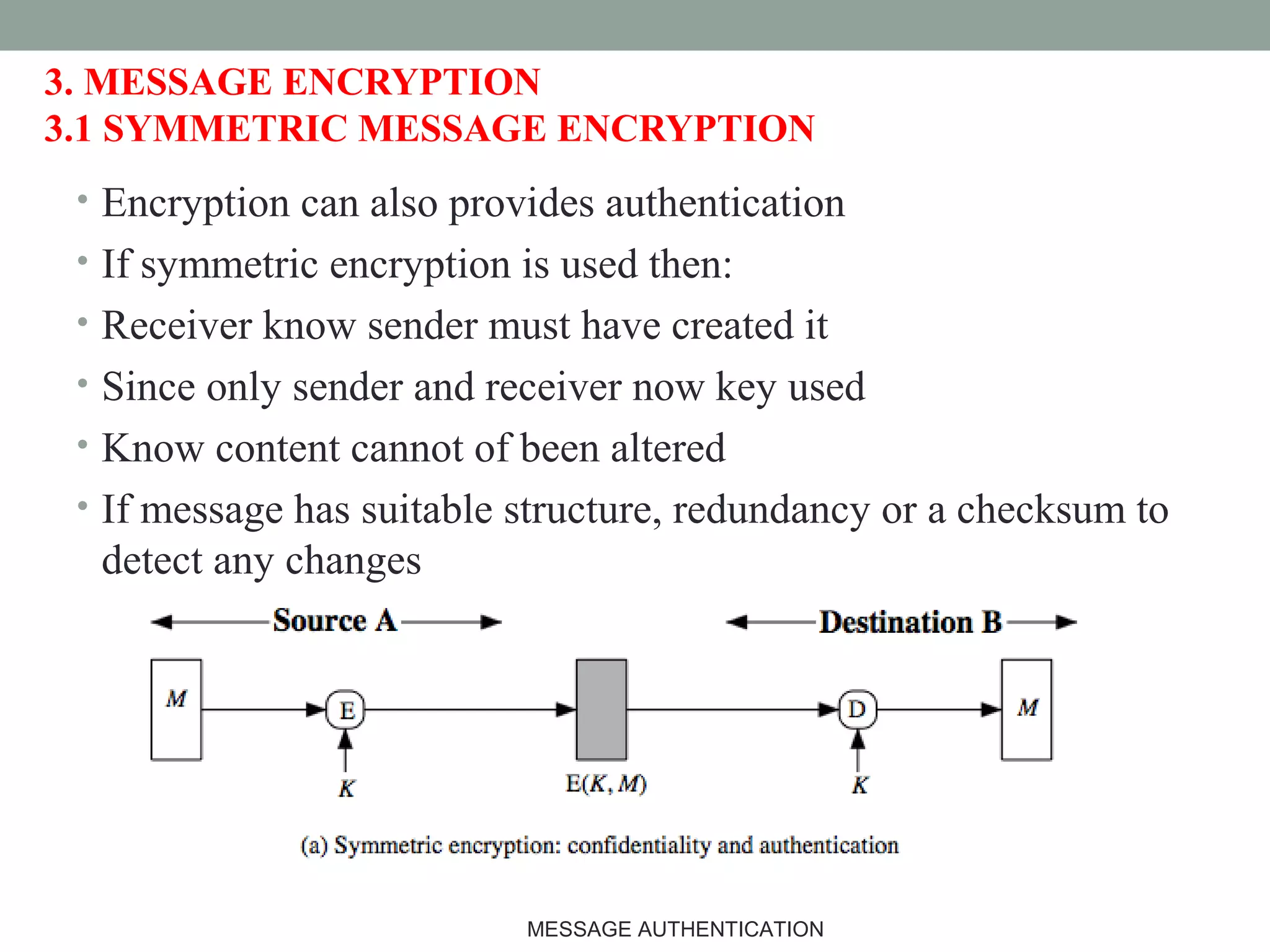
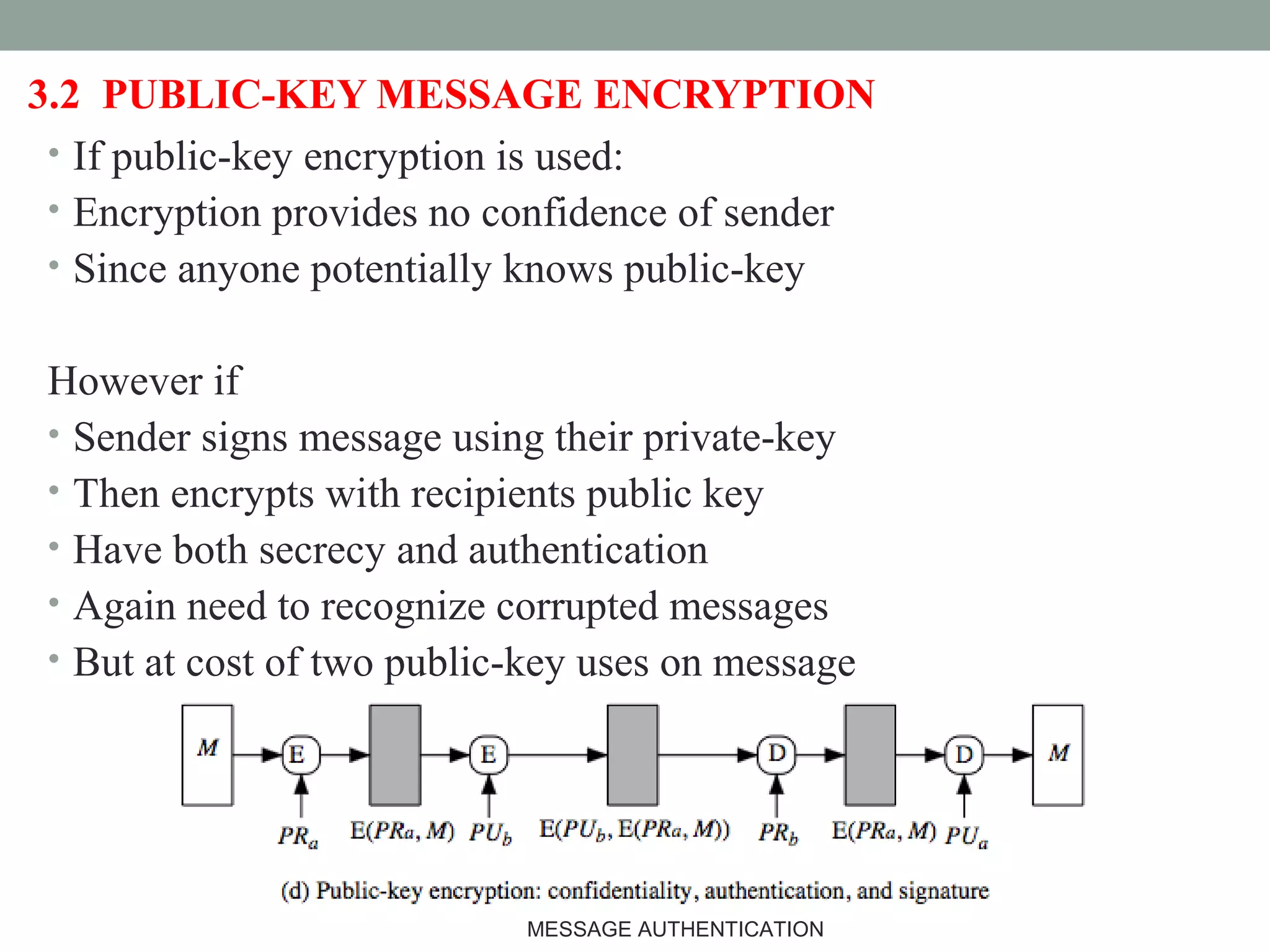
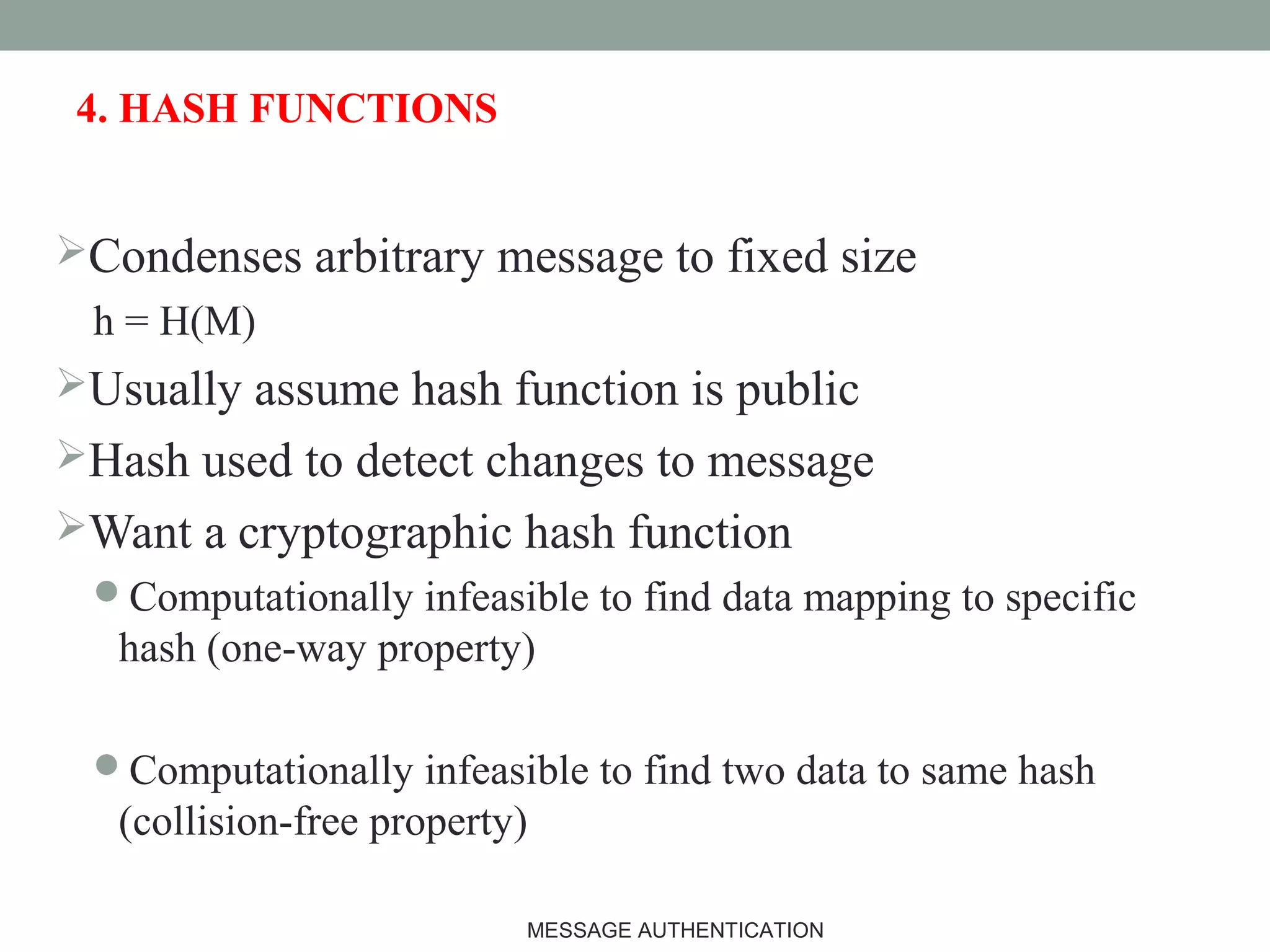

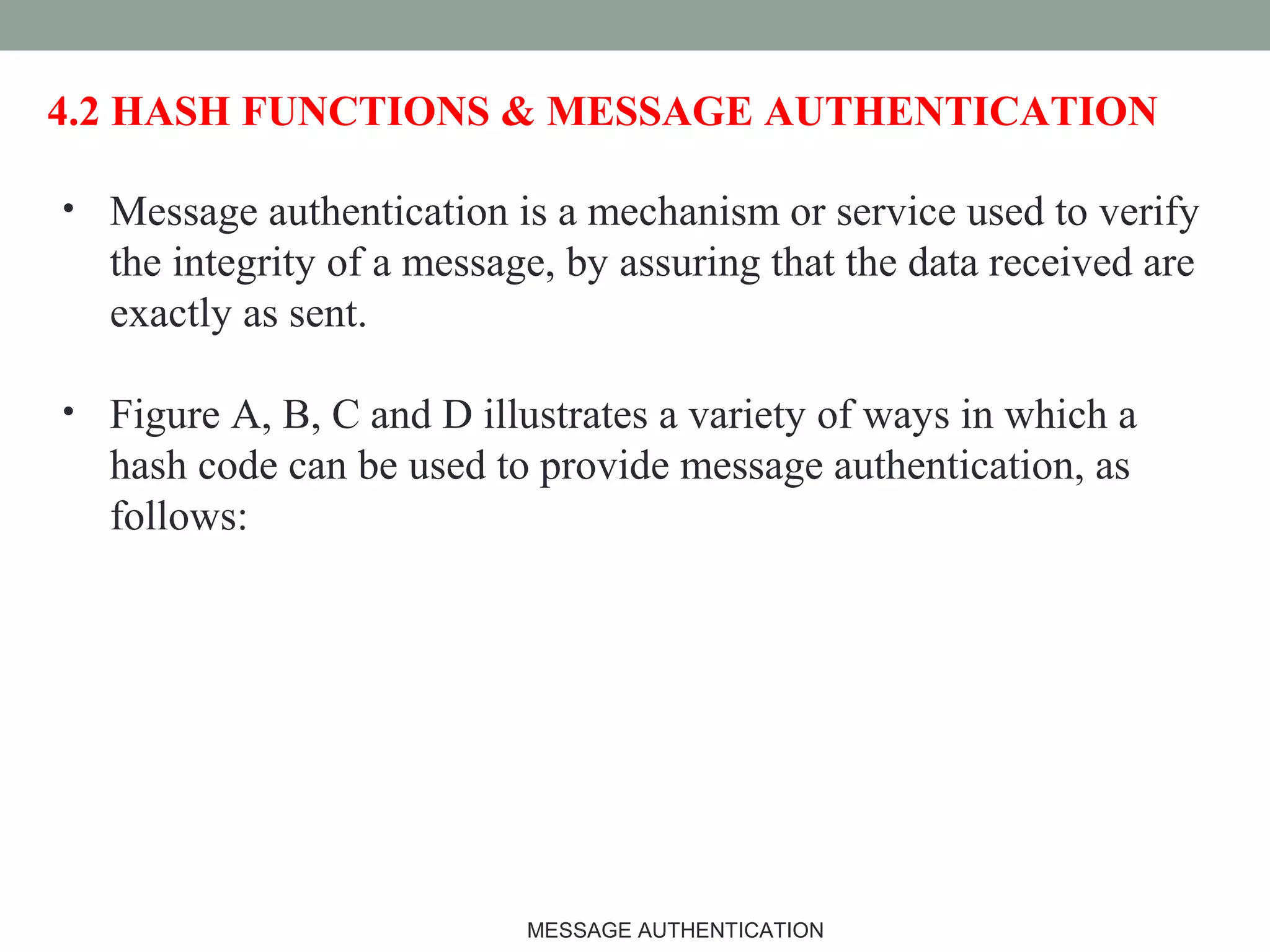
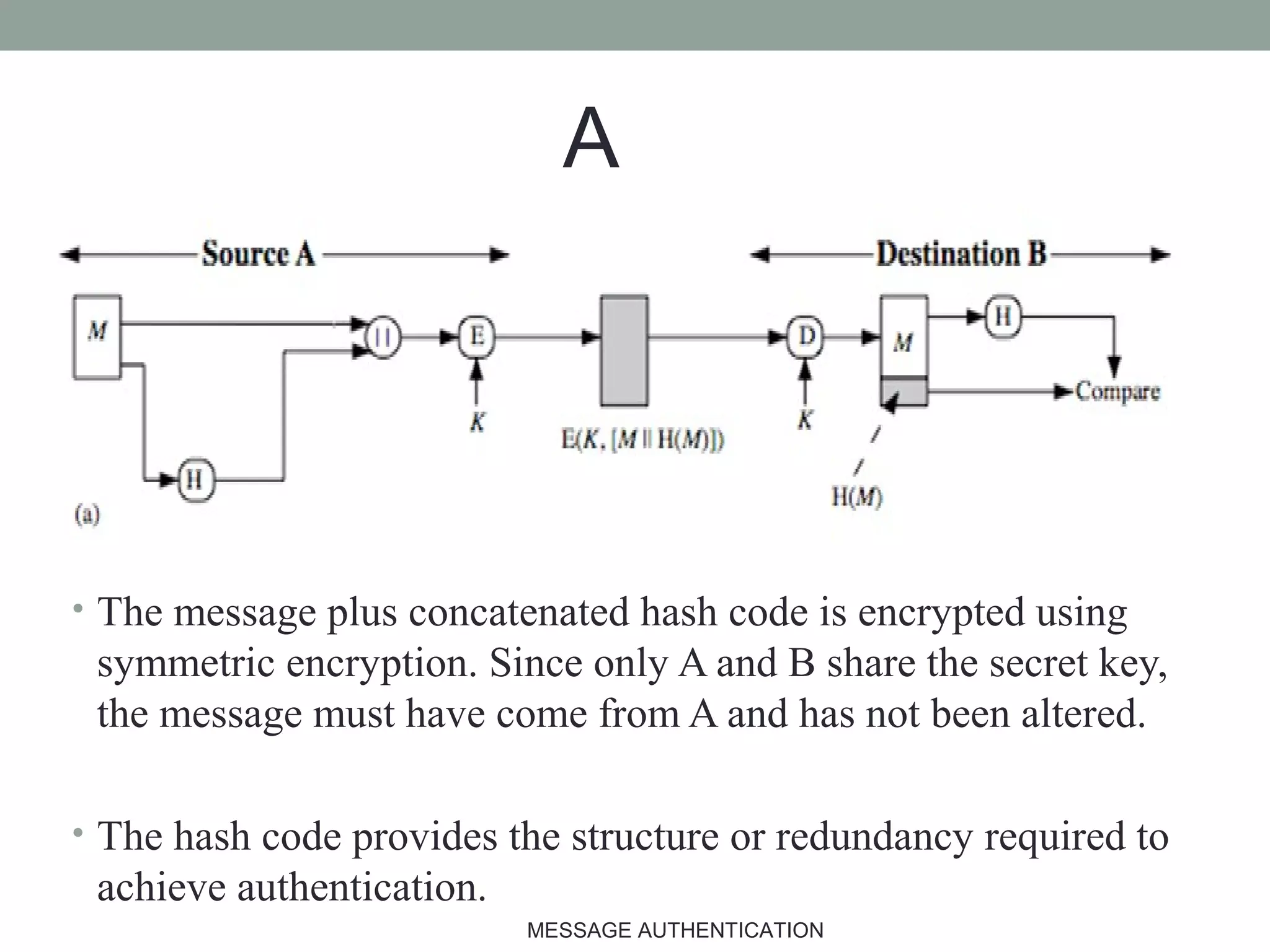
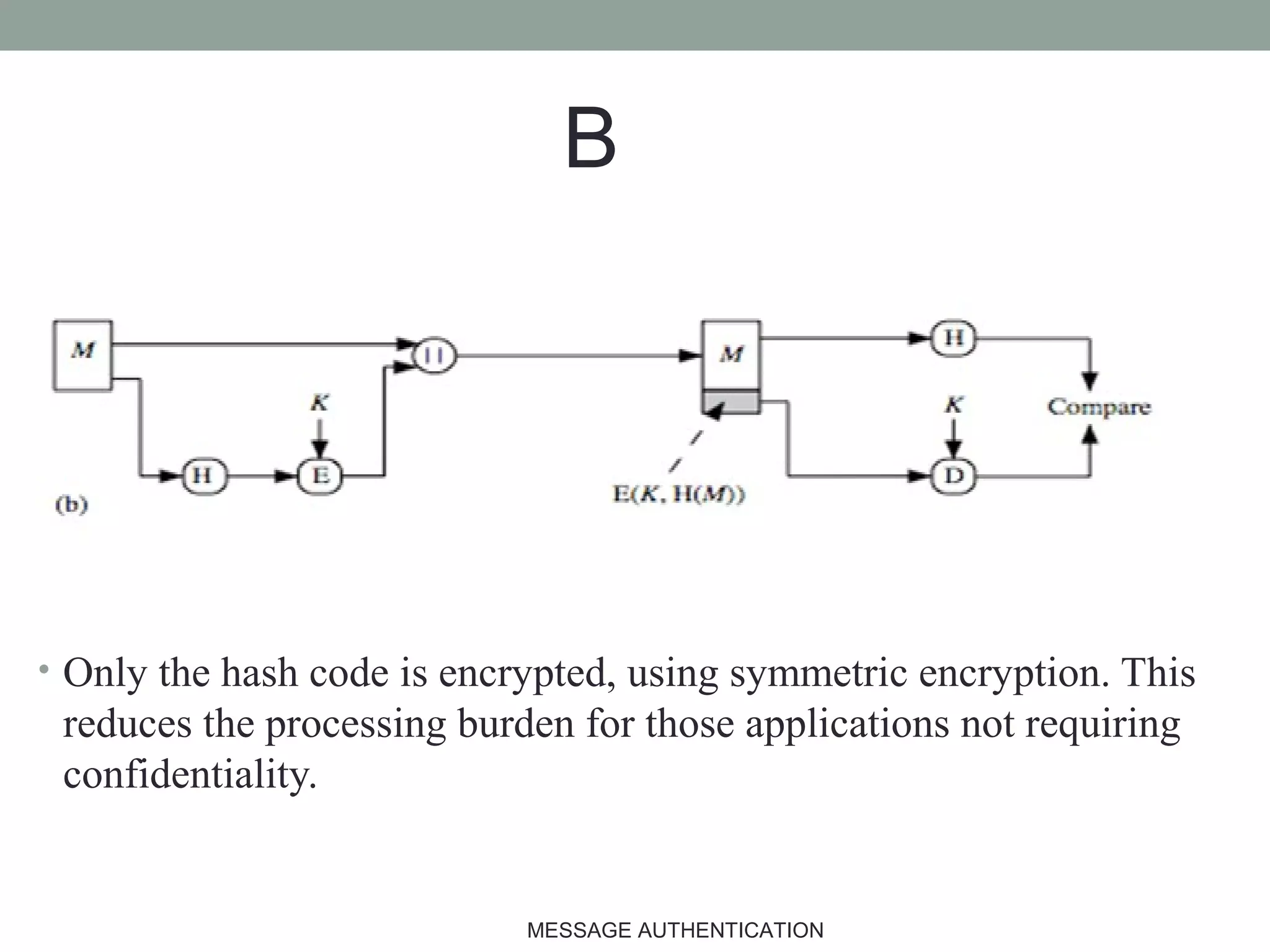
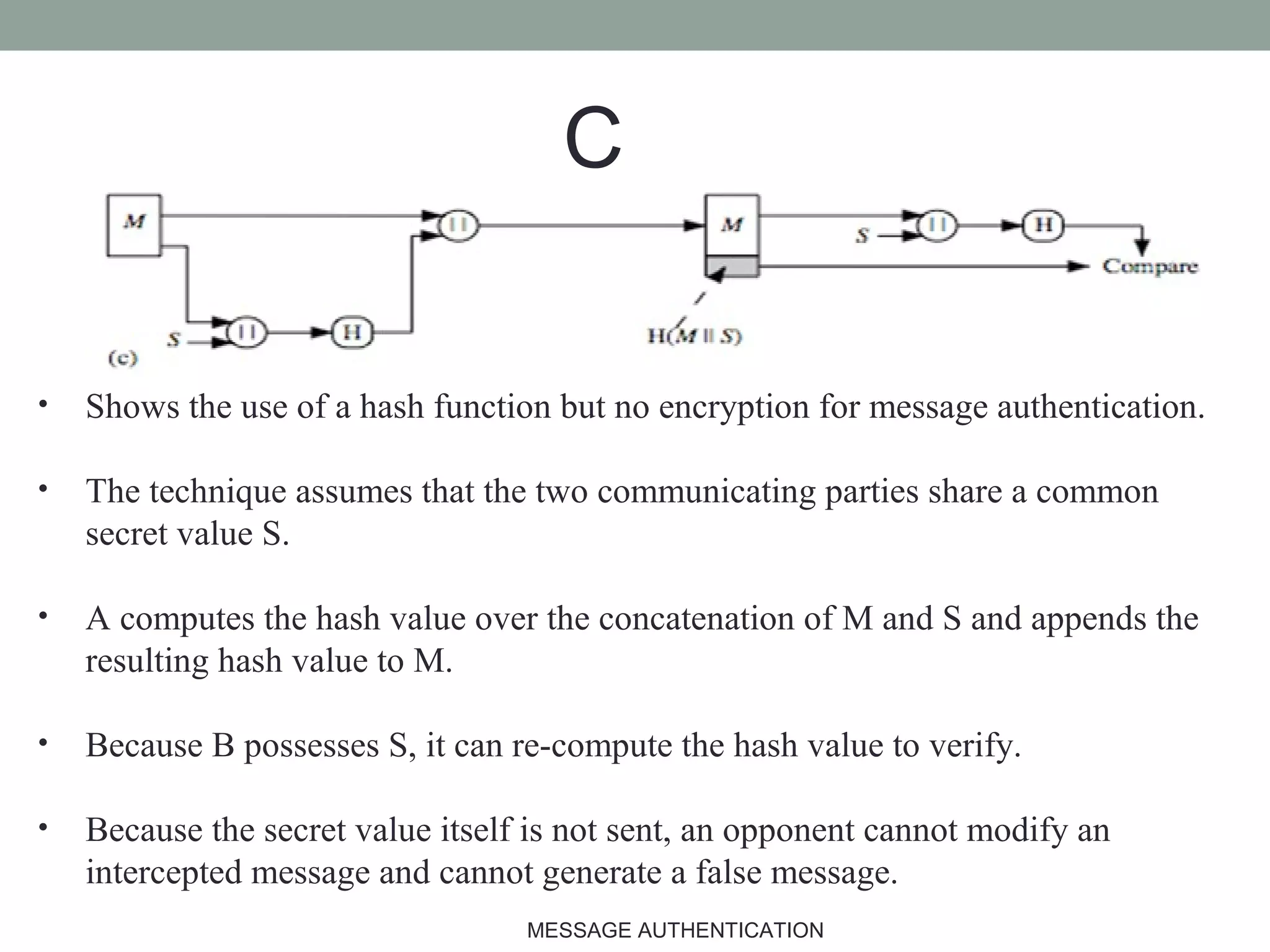
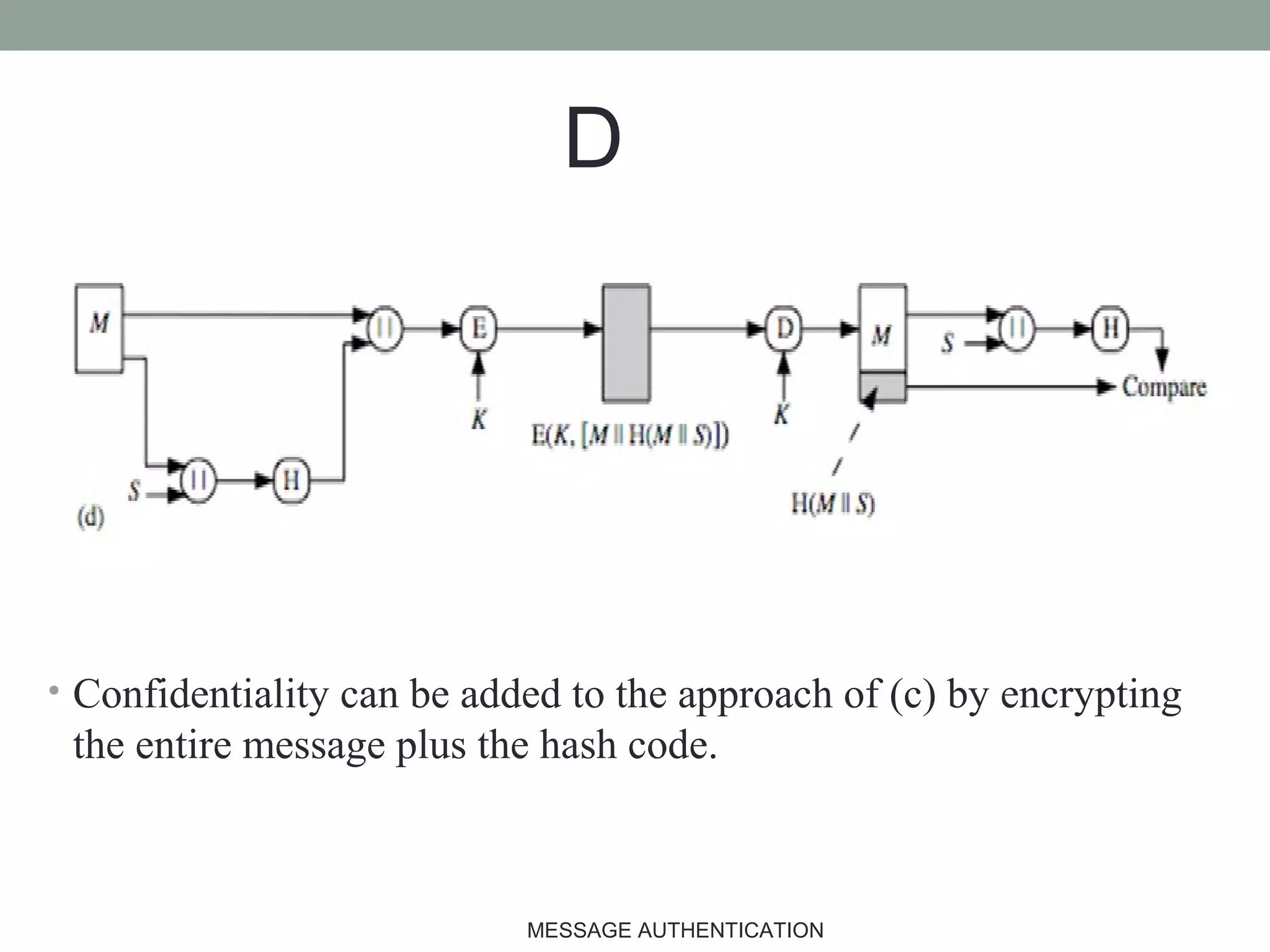
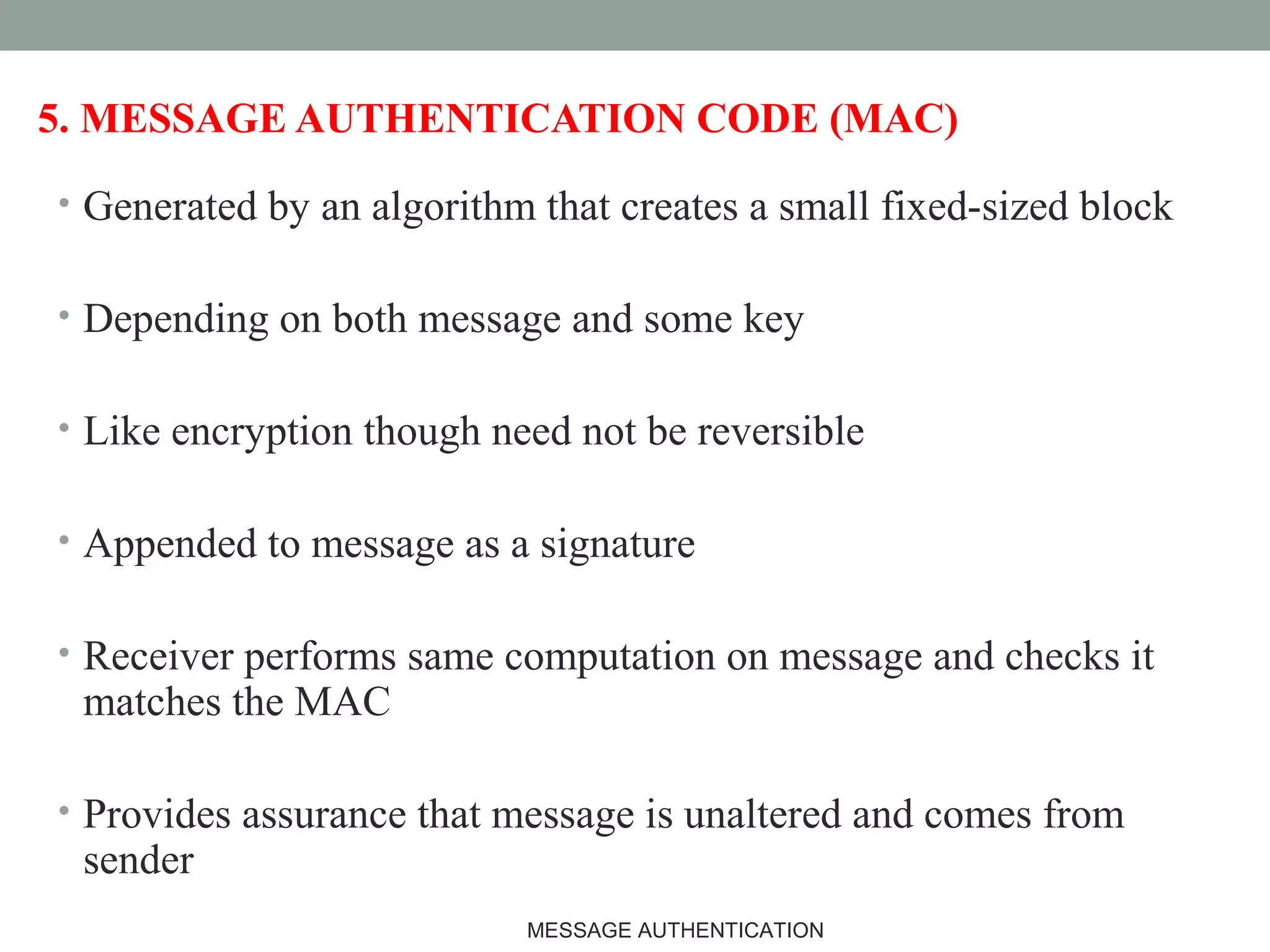
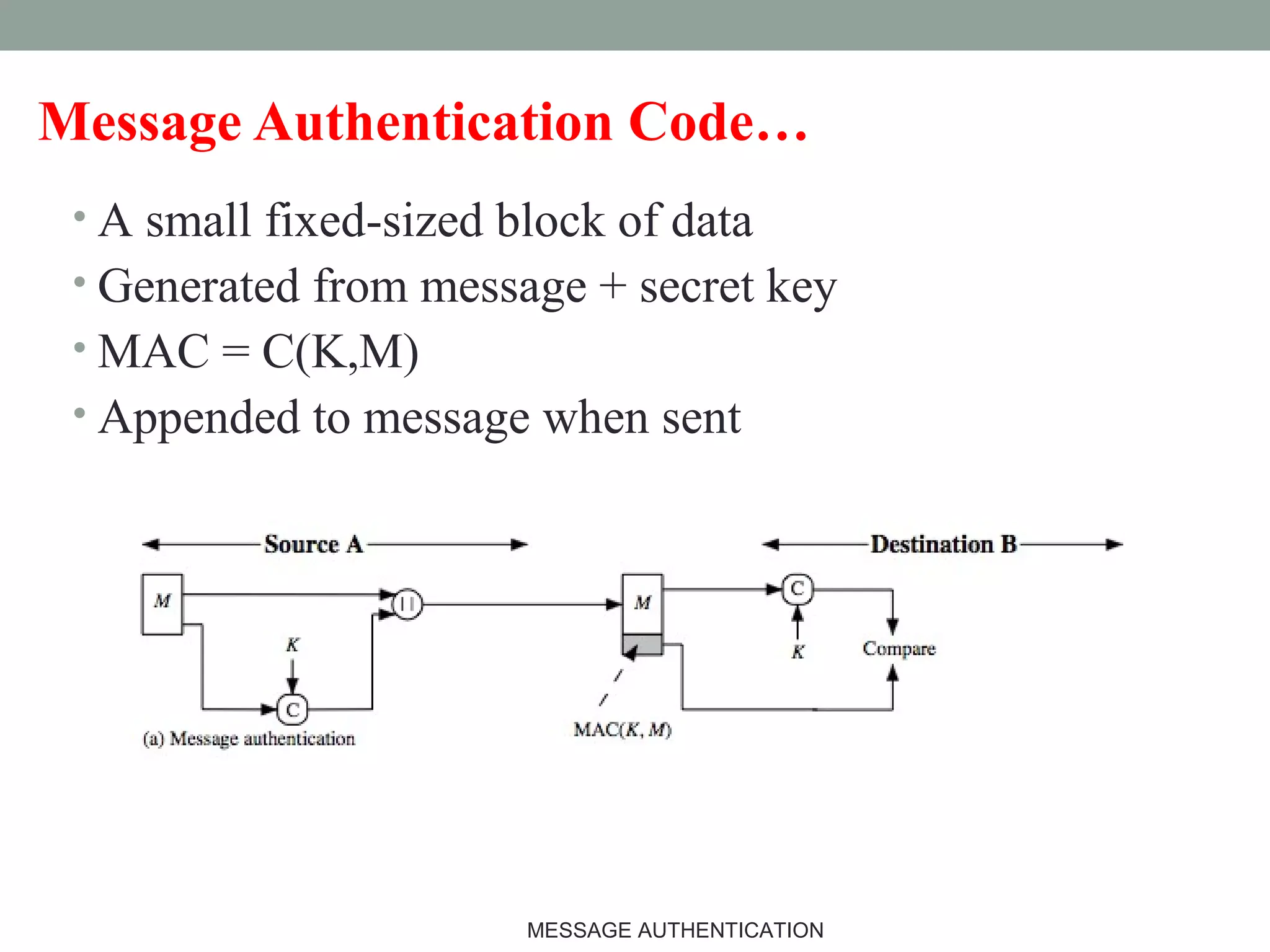
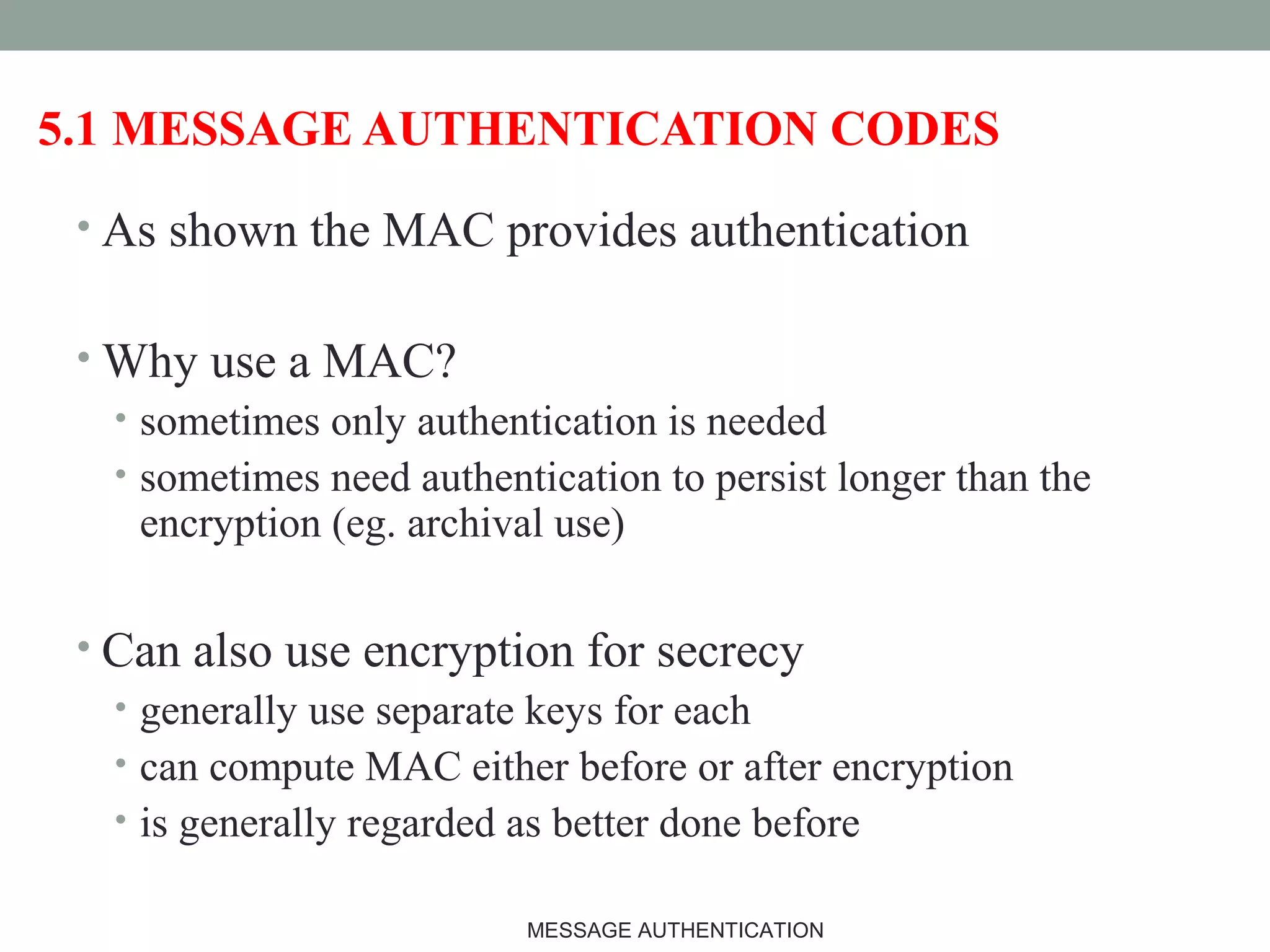
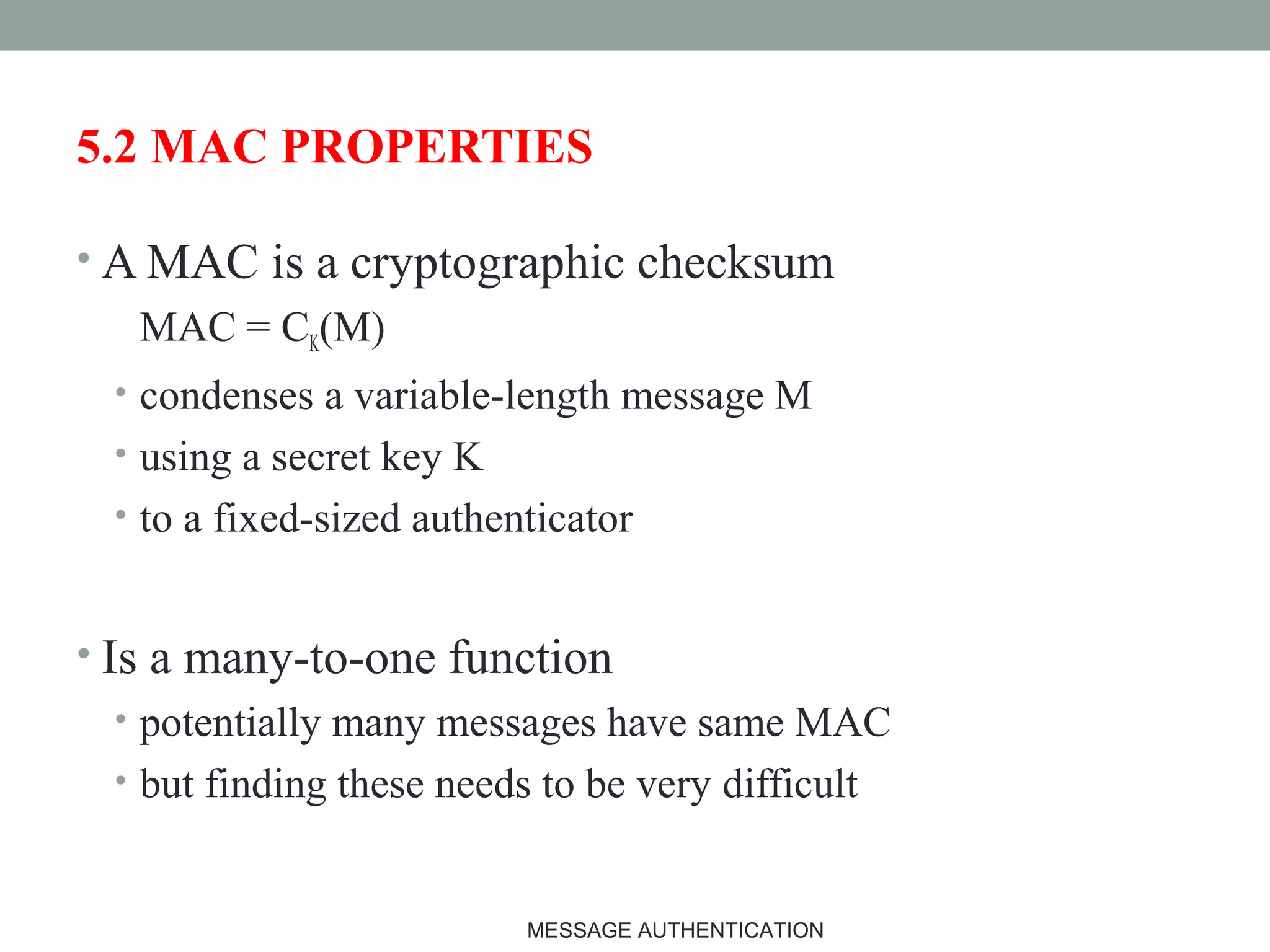
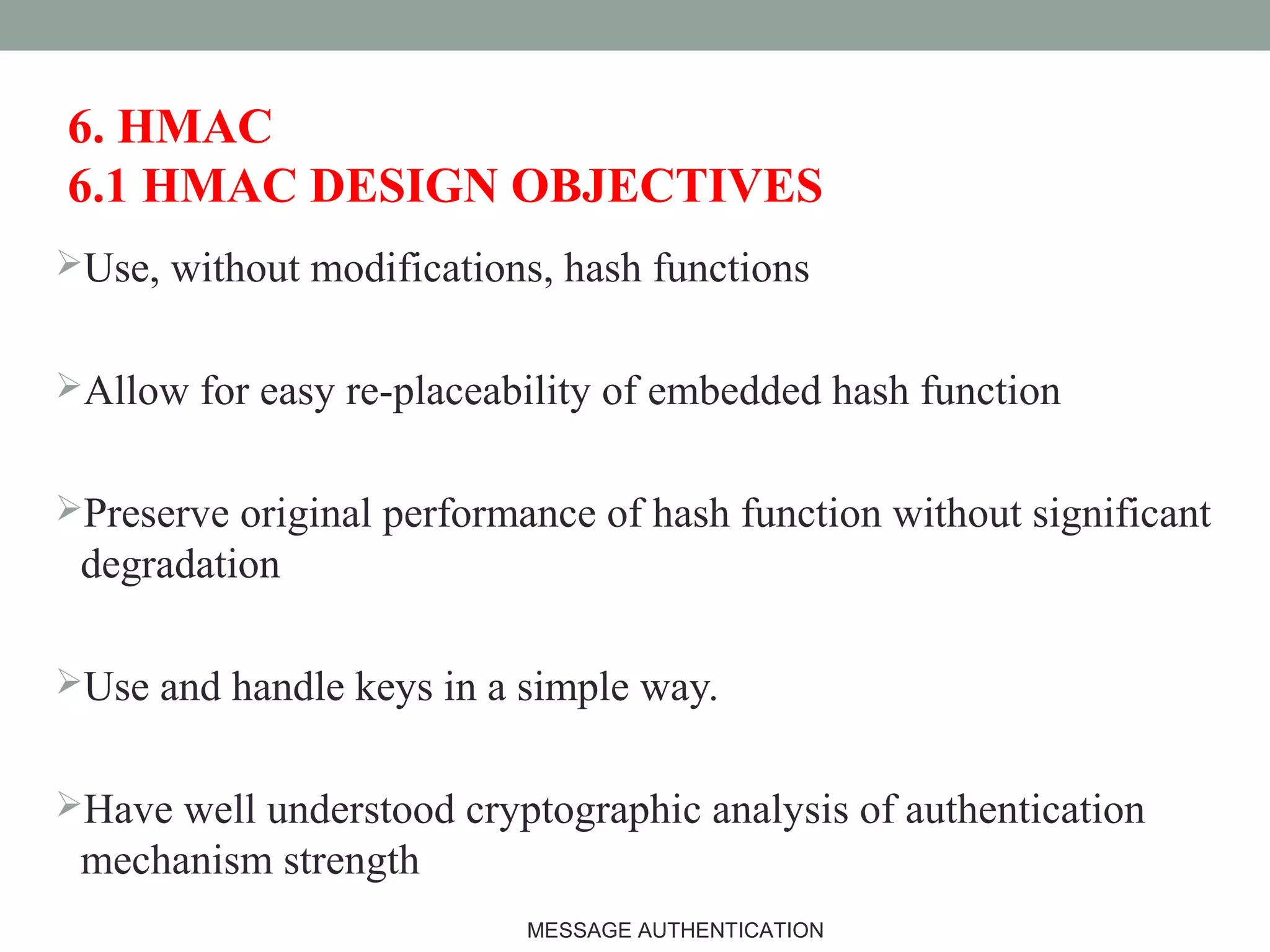
![HMAC…
• Uses hash function on the message:
HMACK(M)= Hash[(K+
XOR opad) ||
Hash[(K+
XOR ipad) || M)] ]
• where K+
is the key padded out to
size
• opad, ipad are specified padding
constants
• Overhead is just 3 more hash
calculations than the message needs
alone
• Any hash function can be used
• eg. MD5, SHA-1, RIPEMD-160,
Whirlpool
19MESSAGE AUTHENTICATION](https://image.slidesharecdn.com/messageauthentication-170424005253/75/Message-authentication-19-2048.jpg)
![HMAC Overview
Figure Illustrates the overall operation of HMAC:
HMACK = Hash[(K+
XOR opad) || Hash[(K+
XOR ipad) || M)]
where:
K+
is K padded with zeros on the left so that the result is b bits in length
ipad is a pad value of 36 hex repeated to fill block
opad is a pad value of 5C hex repeated to fill block
M is the message input to HMAC (including the padding specified in the embedded
hash function)
Note that the XOR with ipad results in flipping one-half of the bits of K. Similarly,
the XOR with opad results in flipping one-half of the bits of K, but a different set of
bits.
In effect, pseudo randomly generated two keys from K.MESSAGE AUTHENTICATION 20](https://image.slidesharecdn.com/messageauthentication-170424005253/75/Message-authentication-20-2048.jpg)

